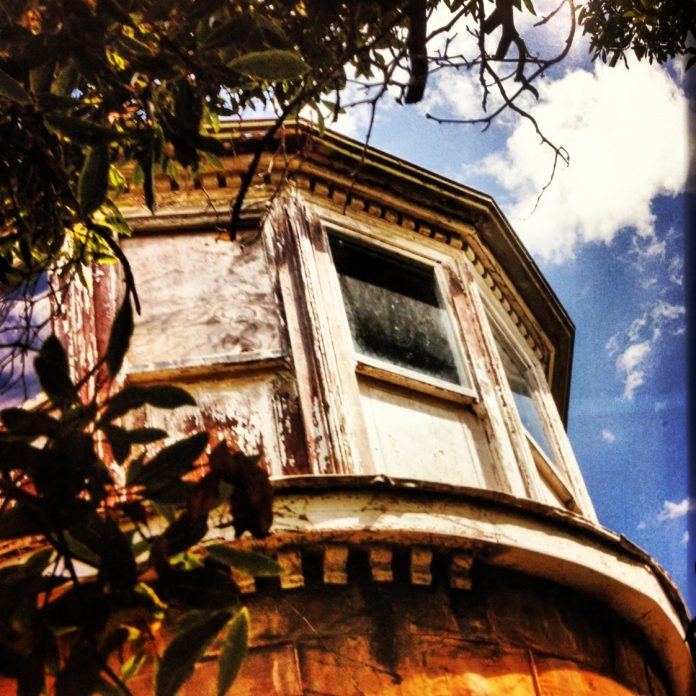Secrets, oddities and artefacts … NOEL MURPHY delves into a Newtown homestead that harks back to the early days of Geelong’s settlement.
DAIMLERS, snuff bottles and gramophones, parlours and gilded mirrors … it’s not quite the springboard setting expected for surfing’s first steps in Victoria.
But for Louis Whyte, who brought the first surfboards to Lorne – 32kg redwood monsters he picked up in 1919 in Hawaii – it was home.
And a sporting home, at that, just as it had been for two generations of his family before him.
With its bargeboard timber homestead, stone water tower, multi-tiered bluestone stable, permanently flowering gardens, pigeon lofts, groom’s quarters and gliding pathways, it was, and still is, a fair old pile.
Sited at Newtown’s highest point with its rear boundary diving precipitously toward the Barwon River, The Heights is a verdant haven of architecture, style and history.
And it’s not without its mystery and secrets, love affairs and haunting spectres.
The sylvan setting, however, seems out of place today, like it should be somewhere in the country; a bucolic rather than suburban homestead.
The Heights was in a rural setting once, way back in 1855 when it was built by Louis Whyte’s grandfather, squatter Charles Ibbotson – for decades the man synonymous with the international business Dalgety’s.
Geelong was still less than 20 years old and the Gold Rush was in full swing. Labour was tight, so pre-fabricated houses were popular.
Ibbotson, who was to sire six children, didn’t waste any time erecting his homestead, putting at its core the largest pre-fabricated German timber building in Victoria.
Ibbotson, a giant in Geelong history, d died at 70 in 1883, a year after wife Mary. Daughter Minna, who married Louis Australia Whyte, inherited the property, in turn passing it on to her son, Louis Melville Whyte.
Father and son were both sportsmen; Louis senior a tennis and golf champion, the younger Louis a surfer, swimmer and car enthusiast.
Louis junior, better known as Lou, saw the great Hawaiian surfer Duke Kahanamoku – the father of modern surfing – in action at Sydney in 1919 and later followed him to Hawaii to spend six months learning to surf.
Together with Ian McIllivray, he returned with four boards that they took to Lorne. One remains on show at Torquay’s Surfworld Museum.
Lou maintained a romance with wife Marnie for 15 years before secretly marrying her in 1936 at age 45. Lou’s mother was fiercely possessive of her son and refused to approve any marriage.
The couple told no one of their wedding until after she died in 1938.
It’s not the only story to be kept quiet at The Heights. Even today staff are circumspect about Louis senior’s departure from this world, although more from regard for visitor sensitivities than any attempt to sweep it under the carpet.
But a 1911 headline spelled it out in no uncertain terms: “Ends life with a revolver’’.
“Louis A. Whyte, a well-known and popular sportsman, was found dead on Monday at his residence, The Heights, Newtown, Geelong.
“Deceased, who leaves a widow and one son, had suffered from neuritis for the past three years and of late he had been very much depressed.
“When he was found there was a bullet hole in his head and a revolver clutched in his right hand. To gain admission to the room the door had to be burst in.
“Deceased was, in his eighties, a champion lawn tennis player and a few years ago a prominent golf player.”
Strolling through the home today – it was bequeathed to the National Trust in 1975 – the visitor meets an amalgam of 19th Century and 1930s lifestyle trappings.
It’s a curious, beguiling mix – few Geelong homes can boast flagstone courtyards and sandstone water towers outside their bedroom window. Or clear vistas of the You Yangs through the main lounge’s windows.
Or, again, a formal 19th Century dining room and state-of-the-art 1930s kitchen, sprawling verandahs, broad passageways, floor-to-ceiling glazing, period prints, flora and fauna-inspired wallpaper patterns, a slate roof, bow windows, a billiard room …
The Heights hosts an impressive manifest. Not all is of Ibbotson/Whyte provenance but everything is contemporary with the periods during which they occupied the home – Georgian furniture, radiograms, sewing machines, mannequins, jugs, Roman busts, books, carved chairs, wooden trunks, marble mantels, pianos, lantaloo card table, lamps and lanterns, walnut desks and more.
Curator Rochelle Craig is a wealth of information as she leads visitors through The Heights.
She explains the paintings inside Oriental snuff jars, the fireplace screens to prevent makeup and moustache wax melting, the sunken baths and shower roses, xylophone dinner bells, staff routines, water tanks and towers.
Rochelle points out the various species of trees in the yards and differentiates tongue and groove timber walls from the 1850s and overlapping weatherboards from the 1930s.
“The dovecote was for keeping birds,” she explains.
“In the 1850s they kept pigeons because they ate pigeon pie. People now go ‘Oooh’ but it was very popular.
Rochelle reveals The Heights’ role in early settlers’ “acclimatisation” of Australia, which involved the importation of various plants and animals.
“I apologise to people that blackbirds were released from this property.”
She makes a telling point about the many things of stone and wood peppered throughout the property.
“You can imagine with all this varied stonework and wood and gardens and everything, we gets lots of weddings. You can get different themes and the photographers love it.’’
It’s hardly surprising – there’s a lot to love.







